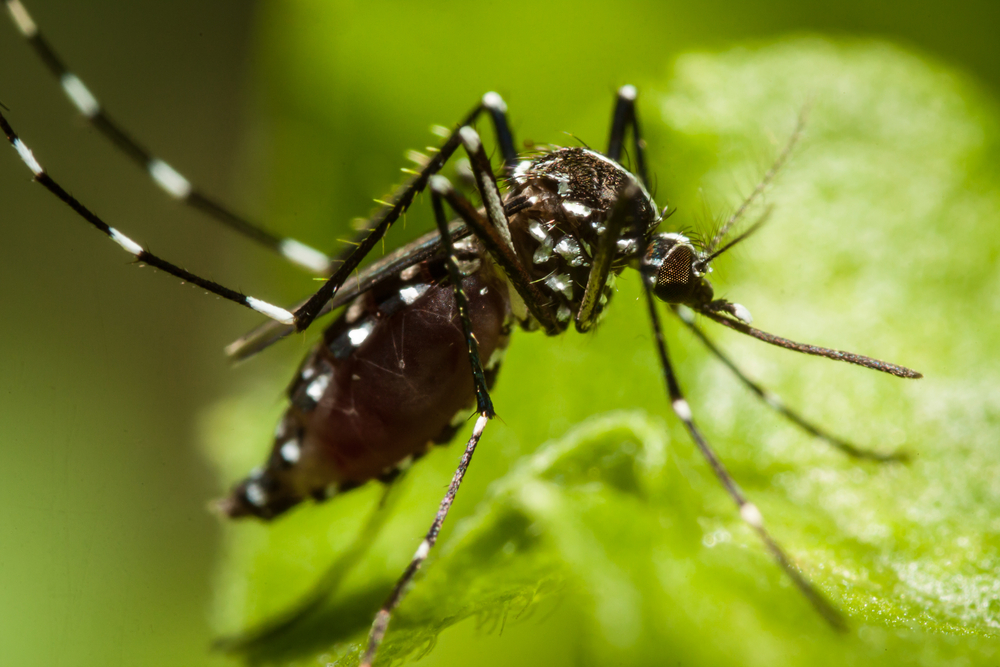
With the recent explosion of stories about the Zika virus, the world’s attention has once again returned to mosquitos. Sometimes called ‘the most dangerous animal on Earth’, mosquitos have been part of ecosystems around the globe since at least the Cretaceous period, and have been a pest to humans throughout recorded history. While it’s easy to lump these flying insects into a single homogeneous (and loathsome) group, there are more than 3,500 species of mosquito—with tremendous variation in their habitats, prey preferences, and roles in disease transmission. Let’s take a look at some mosquito species from the roughly six per cent that directly impact humanity.
Mosquito 1: Aedes aegypti

The current A-lister of the mosquito world, Aedes aegypti has dominated global news cycles ever since it was found to transmit the Zika virus (an emerging disease linked with serious birth defects), in addition to dengue, yellow fever, and chikungunya. Originally from sub-Saharan Africa, this species is now found throughout tropical and subtropical parts of the world, and can be easily distinguished by the white ‘lyre shaped’ markings above its eyes. The activity of Aedes aegypti is strongly tied to light, with this species most commonly biting humans indoors during daylight hours.
Mosquito 2: Anopheles gambiae

Sometimes called the ‘malaria mosquito’, Anopheles gambiae is found throughout tropical Africa, where it transmits the most dangerous form of malaria: Plasmodium falciparum. These small mosquitos are active at night and prefer to bite humans indoors—making bed nets a critical method of malaria prevention.
Mosquito 3: Culex pipiens

Found throughout the Northern Hemisphere, the northern house mosquito is a medium-sized brown-coloured species that is widespread in urban and suburban areas. Culex pipiens are most active at night, and while they prefer to feed on sleeping birds, they also regularly bite humans—serving as a vector for West Nile virus, meningitis and Japanese encephalitis in the process.
Mosquito 4: Aedes albopictus

Easily identified by its dramatic black and white coloration and thick vertical stripe between its eyes, the Asian tiger mosquito is native to Southeast Asia, but is now found across the tropical and subtropical regions of the globe. This species is a primary vector for dengue and chikungunya, but also transmits West Nile virus, Japanese encephalitis—and may even be a vector for Zika. Asian tiger mosquitos feed aggressively during the day, usually biting humans outdoors in the early morning or late afternoon.
Mosquito 5: Anopheles plumbeus

This small species of mosquito is found throughout Europe, including northern regions of the United Kingdom and Scandinavia. Active during daylight hours, female Anopheles plumbeus are efficient carriers of malaria parasites—with the potential to transmit tropical malaria after biting infected travellers returning home from abroad with parasites in tow.
Mosquito 6: Culex quinquefasciatius

The southern house mosquito is a medium-sized species that is distributed throughout tropical and subtropical areas worldwide. Active at night, this species descends from elevated resting places in trees or buildings to feed, and serves as an efficient vector for multiple pathogens, including Wucheraria bancrofti—the parasitic nematode responsible for causing elephantiasis.
Mosquito 7: Male Mosquitos

Identifiable by large, brush-like antennae and long feathery palps alongside the proboscis, male mosquitos don’t feed on blood and never bite people. Instead, male mosquitos of all species eat mainly nectar and other plant fluids, and generally avoid contact with humans.
Want to experience the big world of very tiny bugs? Check out our video streaming app for the latest documentaries and shows on the interesting lives of insects, bloodsuckers or not…
